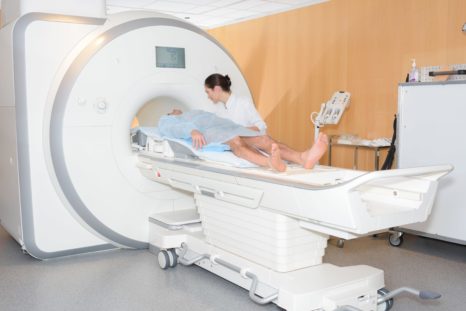What is Acromioclavicular Joint Osteoarthritis?
Simon Moyes discusses what acromioclavicular joint osteoarthritis is, its common symptoms and how it can be treated.
The acromioclavicular joint or AC joint is a joint at the top of the shoulder. It is located where the collar bone (clavicle) meets the top part of the shoulder blade (acromion) and is held in place by several ligaments and capsule.
Over time, the bones in the joint can wear out, become larger and lead to the development of spurs around the joint. This can result in a degenerative disease known as osteoarthritis, which causes damage to the joint and underlying tendons.

If you use your arms for any extended period of time, especially if you are constantly lifting things above your head, you are susceptible to acromioclavicular Joint (ACJ) Osteoarthritis. The other main triggers for ACJ osteoarthritis are former injuries such as ACJ dislocation, or any other activity that can put pressure on the joint, such as swimming and racquet/ throwing sports.
Patients suffering with ACJ osteoarthritis, particularly those over 40, are likely to experience pain well-localized to the joint, pain moving their arm above shoulder height and pain at night. This is because the biomechanics of the joint cause the joint to be maximally stressed when the arm is fully elevated.
The treatment process will follow after it has been determined whether or not the patient has degeneration of the joint. This process will include an extensive evaluation by the surgeon and will include an X-ray and either an ultrasound or MRI scan to evaluate the soft tissues such as tendons/ligaments.
To treat this condition, options include physiotherapy and injections – these normally being successful in 75% of patients. If these conservative measures fail, the surgeon will carry out an ACJ Arthroplasty.
During the arthroscopic surgery, the surgeon will remove the thickened cushioning tissue (bursa) and any badly damaged ligaments. The last 1cm of the collar bone will also be cut off. The surgeon will also trim and smooth out any bone spurs or any other areas of diseased bone in the joint.
Patients will be required to wear a shoulder sling for 24 hours after the operation and will be instructed to undertake various mobilisation exercises to help the healing process. This will be followed by a series of strengthening exercises a few weeks later. Patients should be able to return to normal activities within six weeks.
Contact Simon Moyes for an expert diagnosis and treatment of all your shoulder problems.
Simon Moyes is an internationally renowned orthopaedic surgeon and leader in the field of arthroscopic (keyhole) surgery. His Capital Orthopaedics team works from The Cromwell Hospital in London, with its state-of-the-art diagnostic and surgical equipment, and top sports medicine professionals.
